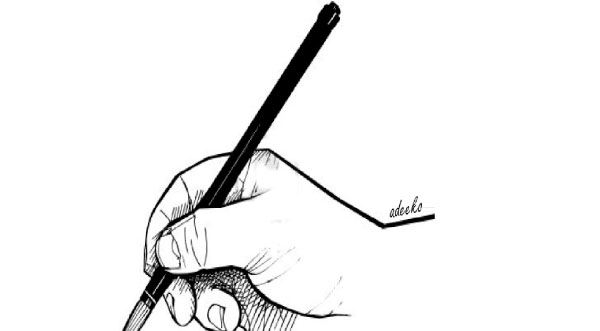Financial inclusion is not just a critical component for sustainable economic growth; it is essential for ensuring that all members of the society, particularly women, can participate fully in the economy. In Africa, where the gender gap in access to financial services remains alarmingly wide, the exclusion of women from financial systems exacerbates poverty and hinders societal progress. Although women make up half of the continent’s population, they are significantly under-banked, with many unable to access even the most basic financial services. Fintech, with its potential to deliver innovative and accessible financial solutions, offers a powerful avenue to close this gap and create greater economic equity across the continent. However, to truly achieve meaningful financial inclusion, fintech solutions must be designed with an acute understanding of the unique needs and challenges faced by women in Africa.
The barriers to financial inclusion in Africa can be broadly categorised into demand-side and supply-side challenges. Demand-side barriers refer to the obstacles that individuals face in accessing and using financial services. These include factors such as income disparity, where high poverty levels and subsistence income prevent many women from opening and maintaining bank accounts. Additionally, literacy challenges, including a significant gender gap in both general and financial literacy, make it difficult for women to navigate complex financial systems. Legal and cultural barriers further exacerbate these challenges, with outdated laws and restrictive cultural norms limiting women’s financial independence and access to credit.
On the other hand, supply-side barriers pertain to the limitations within the financial services themselves. These include issues like mobility constraints, where women, especially in rural areas, struggle to physically access financial institutions due to security concerns, cultural restrictions, and the high cost of travel. Furthermore, the lack of identification documents, which are often required to access financial services, disproportionately affects women. Additionally, financial products are frequently designed without considering the unique needs of women, leading to a mismatch between what is offered and what is actually needed. Addressing both demand-side and supply-side barriers is essential to achieving comprehensive financial inclusion for women in Africa.

The challenges women face in accessing financial services in Africa are however not monolithic; they are influenced by a complex interplay of factors including age, ethnicity, disability, and geographic location. For example, rural women may experience different barriers compared to their urban counterparts, and these barriers can vary significantly from one country to another due to differences in cultural, economic, and political contexts. Addressing financial inclusion, therefore, requires a nuanced approach that considers the intersectionality of these factors. A one-size-fits-all solution is unlikely to be effective. Instead, interventions must be tailored to meet the specific needs of women in different regions, ensuring that no woman is left behind.
While fintech holds the promise of revolutionizing financial inclusion, there is a risk that these solutions could inadvertently reinforce existing gender norms and inequalities if not carefully designed. For fintech to truly empower women, it is imperative that they are included in the design process. This inclusion ensures that fintech products challenge, rather than replicate, the patriarchal structures that have historically marginalized women. For instance, fintech solutions should be developed with a deep understanding of the specific challenges women face, such as caregiving responsibilities, limited access to formal employment, and the legal and cultural barriers that restrict their financial independence.
Gender-sensitive product design is crucial in this context. Fintech companies must go beyond superficial marketing efforts that target women and instead create products that are truly responsive to their needs. This includes offering financial services that do not require extensive documentation, which many women may lack, and integrating financial education into fintech platforms to help women make informed decisions. By involving women in the design and development process, fintech can create tools that not only provide access to financial services but also contribute to the broader goal of gender equity.
The promise of fintech in driving financial inclusion is closely tied to digital literacy and access to digital infrastructure. While digital identity verification and mobile banking platforms can help overcome some barriers to financial inclusion, they are only effective if women have the skills and resources needed to use them. Unfortunately, there is a significant digital divide in Africa, with women often having less access to digital tools and the internet than men. This divide is particularly pronounced in rural areas, where digital infrastructure may be lacking, and digital literacy levels are low.

To ensure that fintech solutions are accessible and beneficial to women, there must be a concerted effort to improve digital literacy across the continent. This includes integrating digital skills training into broader educational initiatives and ensuring that women have access to the necessary tools, such as mobile phones and internet connectivity. Moreover, fintech companies should design user-friendly interfaces that cater to varying levels of digital literacy, making it easier for women to engage with these platforms.
Several fintech initiatives have shown promise in bridging the gender gap in financial inclusion in Africa. M-Pesa in Kenya, for example, has revolutionized financial inclusion by providing a mobile-based platform for money transfers, savings, and credit. This platform has been particularly beneficial for women in rural areas, offering them a secure and accessible way to manage their finances and gain financial independence. However, the success of M-Pesa also underscores the importance of considering local contexts and the specific needs of women when designing fintech solutions.
Similarly, TymeBank in South Africa, a digital-only bank, has simplified banking by using AI and digital kiosks for real-time customer onboarding and personalized financial services. With over 5 million customers, TymeBank provides women with accessible and affordable banking options, significantly lowering the barriers to financial inclusion. Yet, the scalability of such solutions across different regions with varying levels of digital literacy and infrastructure remains a challenge that must be addressed.
To fully leverage the potential of fintech in closing the gender gap in financial inclusion, concerted efforts from all stakeholders are essential. Governments should implement policies that promote digital literacy among women, ensuring they have the skills needed to use fintech solutions effectively. Public-private partnerships can be instrumental in expanding the reach of fintech services to underserved communities, particularly in rural areas.
Fintech companies, on their part, must commit to designing products that specifically address the barriers women face. This includes creating user-friendly platforms that require minimal documentation and offering financial products that cater to the irregular income streams common among women in informal economies. Additionally, integrating financial education into these platforms will empower women to make informed decisions and fully benefit from the services offered.
Empowering African women through fintech is not just about providing access to financial services; it is about creating an ecosystem where women can thrive economically and contribute to the continent’s growth. By addressing the unique challenges women face, considering the intersectionality of these challenges, and scaling innovative fintech solutions, we can close the financial inclusion gap and unlock the full potential of Africa’s women. The future of Africa’s economic development depends on the inclusion of women in financial systems, and fintech offers the tools to make this vision a reality. It is time for governments, financial institutions, and fintech innovators to work together to ensure that no woman is left behind in Africa’s financial future.
Oluwaseyi Kehinde-Peters is the founder of Pan-African Women Empowerment Network
READ ALSO: Customs seizes donkey skin, machetes, tramadol, others worth N8.1bn in Ogun, Oyo







